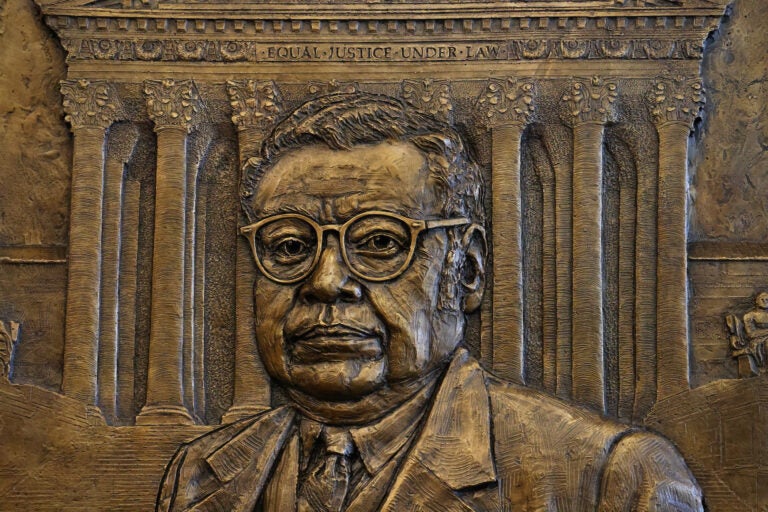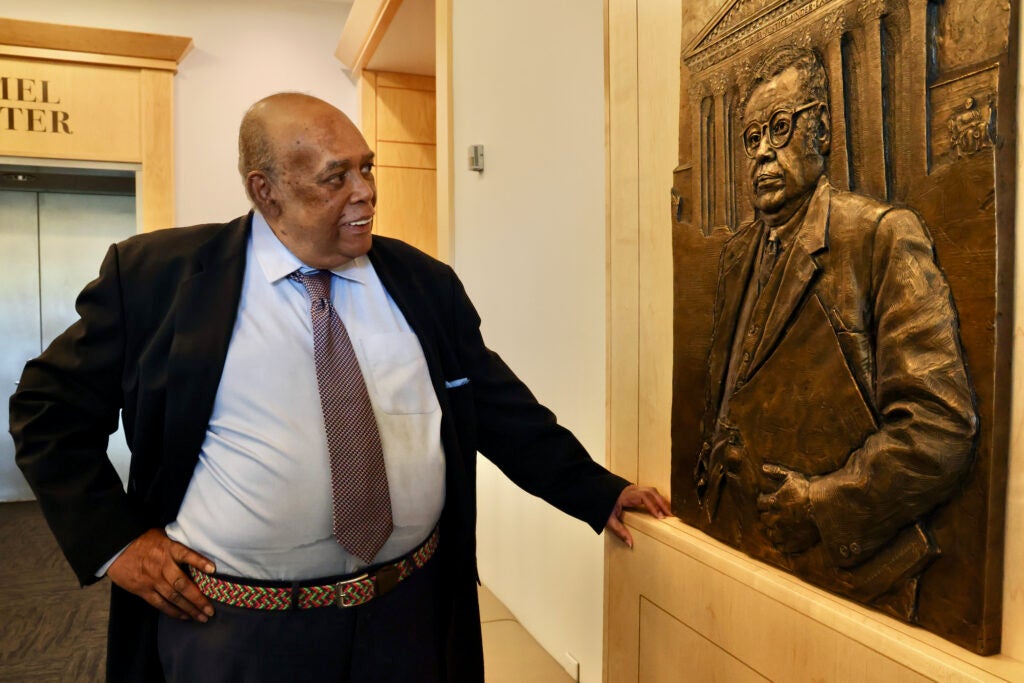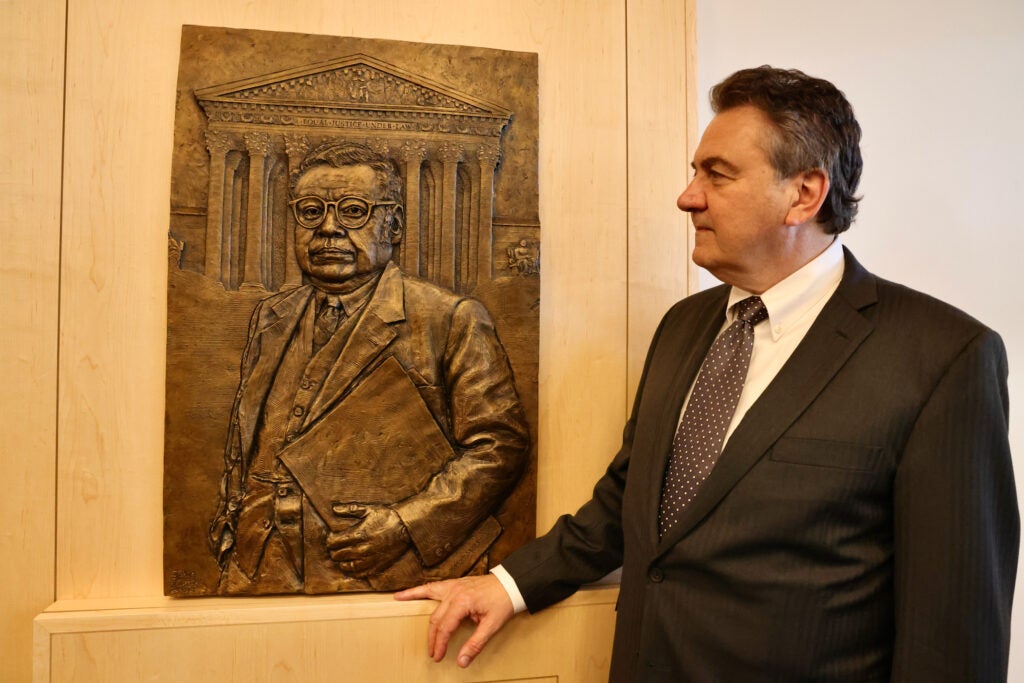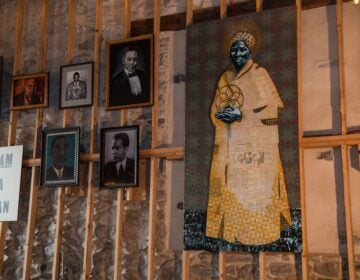Civil rights lawyer William T. Coleman honored among the founding fathers
A bas-relief sculpture of the major civil rights lawyer represents the man who shaped modern Constitutional law.

A bas-relief portrait of William Thaddeus Coleman Jr., who served as counsel in the landmark desegregation case, Brown v. Board of Education, had become a permanent feature at the National Constitution Center in Philadelphia. (Emma Lee/WHYY)
From Philly and the Pa. suburbs to South Jersey and Delaware, what would you like WHYY News to cover? Let us know!
A Philadelphia civil rights lawyer who created foundational precedents in modern American law is now memorialized in the National Constitution Center. A bronze bas-relief of William T. Coleman, Jr., is mounted on a wall outside the Center’s Kimmel Theater.
Coleman, who grew up in Germantown, was part of the legal team behind Brown v. Board of Education, the 1954 case that abolished “separate but equal” racial boundaries in education. He also argued Bob Jones University vs. United States, which made private universities with racially discriminatory policies ineligible for federal tax deductions.
Coleman investigated the assassination of President John F. Kennedy as part of the Warren Commission. There, he worked with then-Congressman Gerald Ford, who later, as President, hired Coleman to be Secretary of Transportation, making him the second Black man to hold a cabinet position.
“It certainly captures the likeness of my father, both in terms of his physicality and his spirit,” said William Coleman, III. “It’s got something of a quality that he had, that was calm, combative, and empathetic.”

Coleman’s hometown was not always kind to him because of his race. When he tried out for the Germantown High School swim team, the team disbanded rather than admit him as a member. After graduating from Harvard Law School at the top of his class, he could not find a job in Philadelphia until the future mayor Richardson Dilworth, then District Attorney, hired him into his law firm Dilworth Paxson. Coleman would rise to senior partner.
When he died in 2017 at age 96, his funeral at the Washington National Cathedral was streamed by PBS television. In 2020, the building that serves as the headquarters of the Department of Transportation was renamed for him.
“There was no memorial, no monument to a native son Bill Coleman in Philadelphia,” said Joseph Jacovini of Dilworth Paxson, Coleman’s old law firm, which instigated the process of commissioning and raising money for the sculpture.
“He loved the city, the people, the organizations, even when he was in Washington. He was always gracious,” he said. “There was a vacuum, and it had to be filled.”
A foundation formed by the Coleman family and Dilworth Paxson hired the prominent sculptor Zeno Frudakis to design the memorial. A friend of the Coleman family, Frudakis previously cast a sculpture of Richardson Dilworth for the Philadelphia airport, as well as the controversy-inducing statue of Mayor Frank Rizzo that was ultimately removed from the Municipal Building plaza in 2020.
Frudakis captured Coleman in his 1954 prime as a passionate young attorney presenting Brown v. Board of Education, set against the iconic Grecian façade of the Supreme Court building.

“As this is the Constitution Center, I thought it would be important to show some connection to the Constitution, that being Brown versus Board of Education,” Frudakis said.
The theater entrance housing Coleman’s bas-relief is downstairs from Signer’s Hall, which features dozens of life-size statues of the Founding Fathers who appear to be negotiating the development of the Constitution, circa 1776. Coleman’s son, William III, said his father’s memorial is the only sculpture in the Center representing a modern architect of Constitutional law.
“I can’t imagine a greater honor to be bestowed upon a lawyer,” he said of his father’s inclusion in the National Constitution Center.
“His true and greatest contribution was made during the Brown vs Board of Education case, … with other lawyers from the Legal Defense Fund,” he said. “That group of people, I would say, are the second generation of Founding Fathers and Mothers.”

Get daily updates from WHYY News!
WHYY is your source for fact-based, in-depth journalism and information. As a nonprofit organization, we rely on financial support from readers like you. Please give today.






